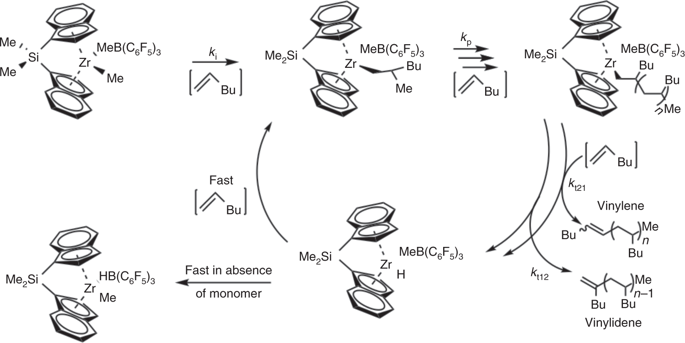Nature Machine Intelligence ( IF 23.8 ) Pub Date : 2020-04-06 , DOI: 10.1038/s42256-020-0166-5 Benjamin A. Rizkin , Albert S. Shkolnik , Neil J. Ferraro , Ryan L. Hartman

|
Understanding polymerization reactions has challenges relating to the complexity of the systems, the hazards associated with the reagents, the environmental footprint of the operations and the highly nonlinear topologies of reaction spaces. In this work, we aim to present a new methodology for studying polymerization reactions using machine-learning-assisted automated microchemical reactors. A custom-designed rapidly prototyped microreactor is used in conjunction with automation and in situ infrared thermography for efficient, high-speed experimentation to map the reaction space of a zirconocene polymerization catalyst and obtain fundamental kinetic parameters. Chemical waste is decreased by two orders of magnitude and catalytic discovery is reduced from weeks to hours. Bayesian regularization backpropagation is used in conjunction with kinetic modelling to understand the reaction space and resultant technoeconomic topology. Here, we show that efficient microfluidic technology can be coupled with machine-learning algorithms to obtain high-fidelity datasets on a complex chemical reaction.
中文翻译:

将自动化微流实验与机器学习相结合以进行有效的聚合设计
了解聚合反应面临着与系统复杂性,与试剂相关的危害,操作的环境足迹以及反应空间的高度非线性拓扑结构有关的挑战。在这项工作中,我们旨在提出一种使用机器学习辅助的自动化微化学反应器研究聚合反应的新方法。定制设计的快速原型微反应器与自动化和原位红外热成像技术结合使用,可进行高效,高速的实验,以绘制锆茂聚合催化剂的反应空间并获得基本动力学参数。化学废物减少了两个数量级,催化发现从数周减少到数小时。贝叶斯正则反向传播与动力学模型结合使用,以了解反应空间和由此产生的技术经济拓扑。在这里,我们表明有效的微流体技术可以与机器学习算法结合使用,以获取有关复杂化学反应的高保真数据集。


























 京公网安备 11010802027423号
京公网安备 11010802027423号